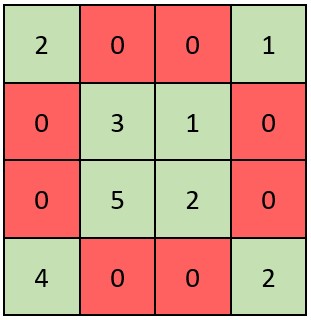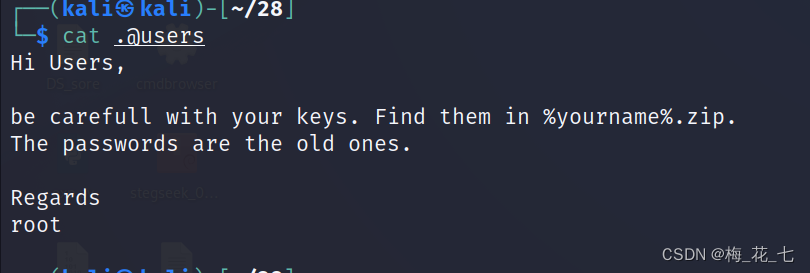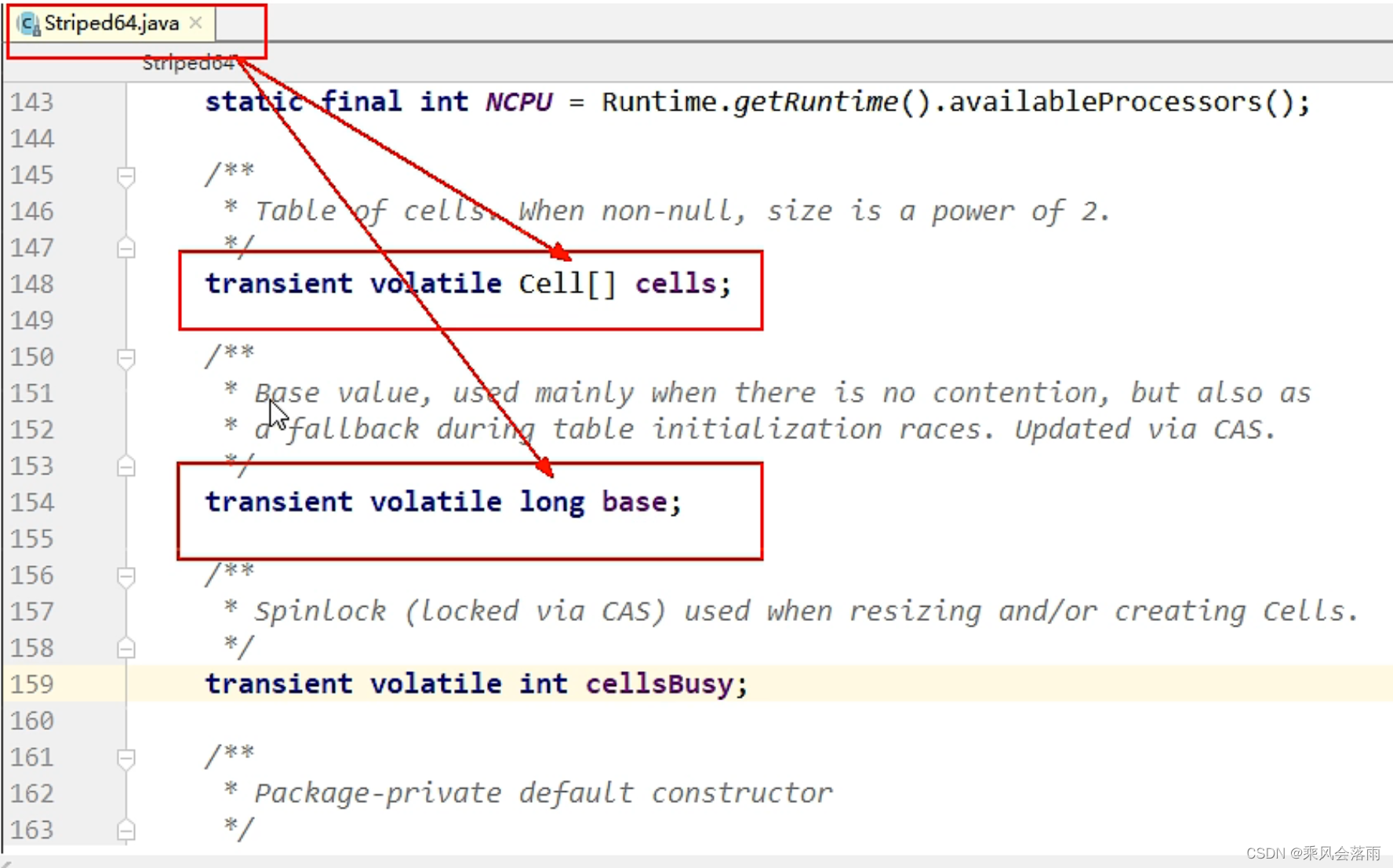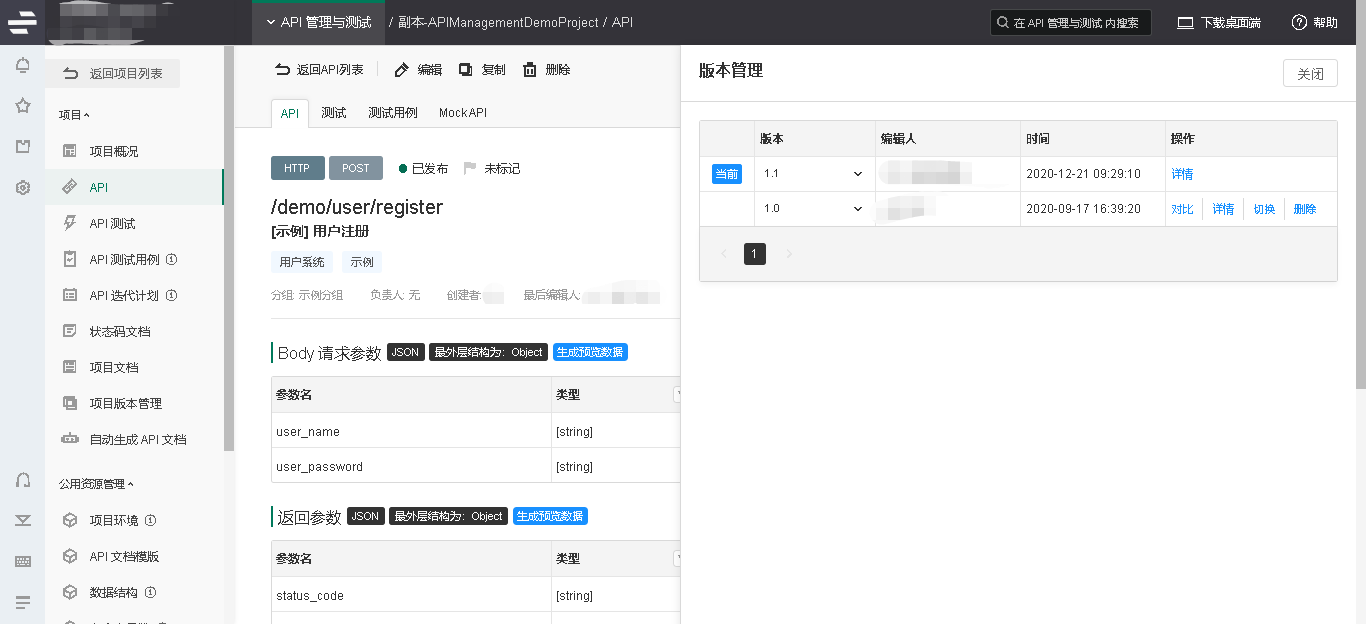当前位置:网站首页>Opencv learning notes high dynamic range (HDR) imaging
Opencv learning notes high dynamic range (HDR) imaging
2022-07-07 20:10:00 【Sit and watch the clouds rise】
One 、 What is high dynamic range (HDR) imaging
The process of combining different images of the same scene obtained under different exposure settings is called high dynamic range (HDR) imaging .
Most digital cameras and displays capture or display color images as 24 Bit matrix . Each color channel has 8 position , Therefore, the pixel value of each channel is in 0 – 255 Within the scope of . let me put it another way , An ordinary camera or display has a limited dynamic range .
However , The world around us has a very large dynamic range . When the lights are turned off in the garage, it will Become dark , If you look directly at the sun , It will become very bright . Even without considering these extremes , In everyday situations ,8 Bit is barely enough to capture the scene . therefore , The camera will try to estimate the light and automatically set the exposure , So that the most interesting part of the image has a good dynamic range , And cut the parts that are too dark and too bright into 0 and 255.
In the following illustration , The image on the left is normally exposed . Please note that , The sky in the background is completely washed away , Because the camera decides to use the correct setting of the subject , But the bright sky was washed away . The picture on the right is iPhone To make the HDR Images .

iPhone How to capture HDR Images ? It was actually shot under three different exposures 3 Zhang image . Images are taken continuously and quickly , So there is almost no movement between the three photos . Then combine these three images to generate HDR Images . We will see details in the next section .
Two 、 High dynamic range (HDR) How imaging works ?
Here we will introduce the use of OpenCV establish HDR Image steps .
The first 1 Step : Capture multiple images with different exposures
When we take pictures with a camera , We only have 8 Bit to represent the dynamic range of the scene ( Brightness range ). But we can shoot multiple scene images under different exposures by changing the shutter speed . Most SLR cameras have one called auto surround exposure (AEB) The function of , Just press the button , We can take multiple photos under different exposures . If you are using iPhone, You can use this AutoBracket HDR Applications , If you are android user , You can try A Better Camera Applications .
Use the camera AEB Or auto bracketing apps on your phone , We can take multiple photos quickly one by one , So the scene won't change . When we're in iPhone Use in HDR Mode time , It takes three pictures .
1、 Underexposed images : This image is darker than the correctly exposed image . The goal is to capture very bright parts of the image .
2、 Correctly exposed images : This is a conventional image taken by the camera according to its estimated illumination .
3、 Overexposed image : This image is brighter than the correctly exposed image . The goal is to capture the very dark part of the image .
however , If the dynamic range of the scene is very large , We can take more than three pictures to synthesize HDR Images . In this tutorial , We will use 4 The exposure time is 1/30、0.25、2.5 and 15 Second image . The thumbnail is shown below .

Information about exposure time and other settings used by SLR cameras or mobile phones is usually stored in JPEG Of documents EXIF In metadata . View this link to view the information stored in Windows and Mac Medium JPEG In the document EXIF Metadata . perhaps , You can use my favorite EXIF Command line utility EXIFTOOL.
Let's start with reading the image , Allocate exposure time
C++
void readImagesAndTimes(vector<Mat> &images, vector<float> ×)
{
int numImages = 4;
// List of exposure times
static const float timesArray[] = {1/30.0f,0.25,2.5,15.0};
times.assign(timesArray, timesArray + numImages);
// List of image filenames
static const char* filenames[] = {"img_0.033.jpg", "img_0.25.jpg", "img_2.5.jpg", "img_15.jpg"};
for(int i=0; i < numImages; i++)
{
Mat im = imread(filenames[i]);
images.push_back(im);
}
}Python
def readImagesAndTimes():
# List of exposure times
times = np.array([ 1/30.0, 0.25, 2.5, 15.0 ], dtype=np.float32)
# List of image filenames
filenames = ["img_0.033.jpg", "img_0.25.jpg", "img_2.5.jpg", "img_15.jpg"]
images = []
for filename in filenames:
im = cv2.imread(filename)
images.append(im)
return images, timesThe first 2 Step : Align image
For composition HDR Misaligned images of images can cause serious artifacts . In the following illustration , The image on the left is synthesized using an unaligned image HDR Images , The image on the right is a composite image using aligned images . By magnifying a part of the image , Use a red circle to show , We see serious ghosting artifacts in the image on the left .

Of course , Used in shooting to create HDR Pictures of images , Professional photographers will mount the camera on a tripod . They also use a function called mirror locking to reduce additional vibration . Even so , Images may also not be perfectly aligned , Because there is no guarantee of a vibration free environment . When taking images with a handheld camera or mobile phone , Alignment problems can get worse .
Fortunately, ,OpenCV Provides a way to use AlignMTB. The algorithm converts all images into median threshold bitmap (MTB). Graphic MTB By setting the value 1 Assigned to pixels brighter than the median brightness , Otherwise 0 Calculated .MTB The exposure time is constant . therefore ,MTB You can align , Without having to specify the exposure time .
Use the following lines of code to perform the execution based on MTB Alignment of .
C++
// Align input images
Ptr<AlignMTB> alignMTB = createAlignMTB();
alignMTB->process(images, images);Python
# Align input images
alignMTB = cv2.createAlignMTB()
alignMTB.process(images, images)The third step : Restore camera response function
The response of a typical camera is not linear to the brightness of the scene . What does that mean? ? hypothesis , Two objects were photographed by the camera , One of them is twice as bright in the real world as the other . When you measure the pixel intensity of two objects in a photo , The pixel value of brighter objects will not be twice that of darker objects ! If the camera response function is not estimated (CRF), We will not be able to merge images into one HDR Images .
Combine multiple exposure images into HDR What does image mean ?
Only consider a certain position of the image (x,y) A pixel of . If CRF Is linear , The pixel value will be proportional to the exposure time , Unless the pixel is too dark in a particular image ( Close to 0) Or too bright ( Close to 255). We can filter out these bad pixels ( Too dark or too bright ), And by dividing the pixel value by the exposure time
// Obtain Camera Response Function (CRF)
Mat responseDebevec;
Ptr<CalibrateDebevec> calibrateDebevec = createCalibrateDebevec();
calibrateDebevec->process(images, responseDebevec, times);To estimate the brightness at the pixel , Then the pixels are good ( Too dark or too dark ) The average brightness value in all images of is too bright ). We can do this for all pixels and get a single image , All pixels are averaged “ good ” Pixels obtained .
however CRF Not linear , We need to linearize the image intensity first , Then we can first estimate CRF To merge / Average them .
The good news is , If we know the exposure time of each image , It can be estimated from the image CRF. Like many problems in computer vision , seek CRF The problem of is set as an optimization problem , Its goal is to minimize the objective function composed of data items and smooth items . These problems are usually reduced to linear least squares problems , Using singular value decomposition (SVD) To solve ,SVD Is part of all linear algebra packages .CRF The details of the recovery algorithm are entitled Recovering High Dynamic Range Radiance Maps from Photos Papers .
Just use OpenCV Two lines of code in , Use CalibrateDebevec Or you can find CRF CalibrateRobertson. In this tutorial , We will use CalibrateDebevec.
C++
// Obtain Camera Response Function (CRF)
Mat responseDebevec;
Ptr<CalibrateDebevec> calibrateDebevec = createCalibrateDebevec();
calibrateDebevec->process(images, responseDebevec, times);Python
# Obtain Camera Response Function (CRF)
calibrateDebevec = cv2.createCalibrateDebevec()
responseDebevec = calibrateDebevec.process(images, times)The following figure shows the use of red 、 The images of green and blue channels are restored CRF.

The first 4 Step : Merge images
It is estimated that CRF after , We can use MergeDebevec. C++ and Python The code is as follows .
C++
// Merge images into an HDR linear image
Mat hdrDebevec;
Ptr<MergeDebevec> mergeDebevec = createMergeDebevec();
mergeDebevec->process(images, hdrDebevec, times, responseDebevec);
// Save HDR image.
imwrite("hdrDebevec.hdr", hdrDebevec);Python
# Merge images into an HDR linear image
mergeDebevec = cv2.createMergeDebevec()
hdrDebevec = mergeDebevec.process(images, times, responseDebevec)
# Save HDR image.
cv2.imwrite("hdrDebevec.hdr", hdrDebevec)It's stored on it HDR Images can be in Photoshop Loading and tone mapping in . An example is as follows .

The first 5 Step : Tone mapping
High dynamic range (HDR) Image conversion per channel 8 The process of preserving as much detail as possible in a bit image is called tone mapping .
Now we have combined the exposed images into one HDR Images . Can you guess the minimum and maximum pixel values of this picture ? For dark conditions , The minimum value is obviously 0. What is the theoretical maximum ? infinite ! In practice , The maximum value is different in different cases . If the scene contains very bright lights , We will see a very large maximum .
Although we have used multiple images to restore the relative brightness information , But now we are faced with saving this information as 24 Bit image for display challenge .
There are several tone mapping algorithms .OpenCV Implemented four of them . Remember that , There is no right way to do tone mapping . Usually , We hope to see more details in the tone mapped image than in any exposed image . Sometimes the goal of tone mapping is to produce realistic images , And usually the goal is to produce surreal images .OpenCV Algorithms implemented in tend to produce real results , So it's not very eye-catching .
Let's look at the various options . Some common parameters of different tone mapping algorithms are listed below .
1、gamma: This parameter applies gamma Correction to compress the dynamic range . When gamma be equal to 1 when , No correction should be applied . Less than 1 Of gamma Will darken the image , But more than 1 Of gamma Will brighten the image .
2、 saturation : This parameter is used to increase or decrease saturation . When the saturation is high , More colors 、 Stronger . The saturation value is closer to zero , Make the color fade into grayscale .
3、contrast: Controls the contrast of the output image ( namely log (maxPixelValue/minPixelValue) ).
Let's explore OpenCV Four tone mapping algorithms available in .
Drago Tonemap
Drago Tonemap The parameters of are as follows
createTonemapDrago
(
float gamma = 1.0f,
float saturation = 1.0f,
float bias = 0.85f
)here ,bias Is the offset function at [0, 1] Values in range .0.7 To 0.9 Values between usually give the best results . The default value is 0.85.
C++ and Python The code is as follows . Parameters are obtained through repeated experiments . The final output is multiplied by 3 Just because it gives the most satisfactory result .
C++
// Tonemap using Drago's method to obtain 24-bit color image
Mat ldrDrago;
Ptr<TonemapDrago> tonemapDrago = createTonemapDrago(1.0, 0.7);
tonemapDrago->process(hdrDebevec, ldrDrago);
ldrDrago = 3 * ldrDrago;
imwrite("ldr-Drago.jpg", ldrDrago * 255);Python
# Tonemap using Drago's method to obtain 24-bit color image
tonemapDrago = cv2.createTonemapDrago(1.0, 0.7)
ldrDrago = tonemapDrago.process(hdrDebevec)
ldrDrago = 3 * ldrDrago
cv2.imwrite("ldr-Drago.jpg", ldrDrago * 255)result

Durand Tonemap
Durand Tonemap The parameters of are as follows .
createTonemapDurand
(
float gamma = 1.0f,
float contrast = 4.0f,
float saturation = 1.0f,
float sigma_space = 2.0f,
float sigma_color = 2.0f
);The algorithm is based on decomposing the image into base layer and detail layer . The base layer is obtained by using an edge preserving filter called a bilateral filter .sigma_space and sigma_color Is the parameter of bilateral filter , Control the amount of smoothing in the space and color fields respectively .
C++
// Tonemap using Durand's method obtain 24-bit color image
Mat ldrDurand;
Ptr<TonemapDurand> tonemapDurand = createTonemapDurand(1.5,4,1.0,1,1);
tonemapDurand->process(hdrDebevec, ldrDurand);
ldrDurand = 3 * ldrDurand;
imwrite("ldr-Durand.jpg", ldrDurand * 255);Python
# Tonemap using Durand's method obtain 24-bit color image
tonemapDurand = cv2.createTonemapDurand(1.5,4,1.0,1,1)
ldrDurand = tonemapDurand.process(hdrDebevec)
ldrDurand = 3 * ldrDurand
cv2.imwrite("ldr-Durand.jpg", ldrDurand * 255)result

Reinhard's tonal chart
createTonemapReinhard
(
float gamma = 1.0f,
float intensity = 0.0f,
float light_adapt = 1.0f,
float color_adapt = 0.0f
)The parameter strength should be [-8, 8] Within the scope of . Higher intensity values produce brighter results .light_adapt Control light adaptation , stay [0, 1] Within the scope of . value 1 Represents an adaptation based only on pixel values , value 0 Indicates global adaptation . The intermediate value can be used for a weighted combination of the two . Parameters color_adapt Control chromaticity adaptation , stay [0, 1] Within the scope of . If the value is set to 1, Then the channel is processed independently , If the value is set to 0, Then the adaptation level of each channel is the same . The intermediate value can be used for a weighted combination of the two .
C++
// Tonemap using Reinhard's method to obtain 24-bit color image
Mat ldrReinhard;
Ptr<TonemapReinhard> tonemapReinhard = createTonemapReinhard(1.5, 0,0,0);
tonemapReinhard->process(hdrDebevec, ldrReinhard);
imwrite("ldr-Reinhard.jpg", ldrReinhard * 255);Python
# Tonemap using Reinhard's method to obtain 24-bit color image
tonemapReinhard = cv2.createTonemapReinhard(1.5, 0,0,0)
ldrReinhard = tonemapReinhard.process(hdrDebevec)
cv2.imwrite("ldr-Reinhard.jpg", ldrReinhard * 255)result

Mandic tone chart
createTonemapMantiuk
(
float gamma = 1.0f,
float scale = 0.7f,
float saturation = 1.0f
)Parameters scale Is the contrast scale factor . from 0.6 To 0.9 The value of produces the best result .
C++
// Tonemap using Mantiuk's method to obtain 24-bit color image
Mat ldrMantiuk;
Ptr<TonemapMantiuk> tonemapMantiuk = createTonemapMantiuk(2.2,0.85, 1.2);
tonemapMantiuk->process(hdrDebevec, ldrMantiuk);
ldrMantiuk = 3 * ldrMantiuk;
imwrite("ldr-Mantiuk.jpg", ldrMantiuk * 255);Python
# Tonemap using Mantiuk's method to obtain 24-bit color image
tonemapMantiuk = cv2.createTonemapMantiuk(2.2,0.85, 1.2)
ldrMantiuk = tonemapMantiuk.process(hdrDebevec)
ldrMantiuk = 3 * ldrMantiuk
cv2.imwrite("ldr-Mantiuk.jpg", ldrMantiuk * 255)result

3、 ... and 、 picture source
Source the four exposure images used in this article are in CC BY-SA 3.0 Licensed under , And from Wikipedia Of HDR page Download the . They are by Kevin · McCoy shot .
边栏推荐
猜你喜欢

有了ST7008, 蓝牙测试完全拿捏住了

力扣 2319. 判断矩阵是否是一个 X 矩阵

Vulnhub's funfox2

Welcome to the markdown editor

Implement secondary index with Gaussian redis

Data island is the first danger encountered by enterprises in their digital transformation

9 atomic operation class 18 Rohan enhancement

vulnhub之Funfox2

Dynamic addition of El upload upload component; El upload dynamically uploads files; El upload distinguishes which component uploads the file.

RESTAPI 版本控制策略【eolink 翻译】
随机推荐
Redis——基本使用(key、String、List、Set 、Zset 、Hash、Geo、Bitmap、Hyperloglog、事务 )
R language ggplot2 visualization: use the ggqqplot function of ggpubr package to visualize the QQ graph (Quantitative quantitative plot)
国家网信办公布《数据出境安全评估办法》:累计向境外提供10万人信息需申报
论文解读(ValidUtil)《Rethinking the Setting of Semi-supervised Learning on Graphs》
CSDN syntax description
R language ggplot2 visualization: use the ggecdf function of ggpubr package to visualize the grouping experience cumulative density distribution function curve, and the linetype parameter to specify t
JVM GC garbage collection brief
Classification automatique des cellules de modules photovoltaïques par défaut dans les images de lecture électronique - notes de lecture de thèse
Force buckle 2315 Statistical asterisk
有了ST7008, 蓝牙测试完全拿捏住了
Version selection of boot and cloud
Visual Studio 插件之CodeMaid自动整理代码
The DBSCAN function of FPC package of R language performs density clustering analysis on data, checks the clustering labels of all samples, and the table function calculates the two-dimensional contin
841. 字符串哈希
Force buckle 599 Minimum index sum of two lists
模拟实现string类
gorilla官方:golang开websocket client的示例代码
Boot 和 Cloud 的版本选型
Equals method
使用高斯Redis实现二级索引